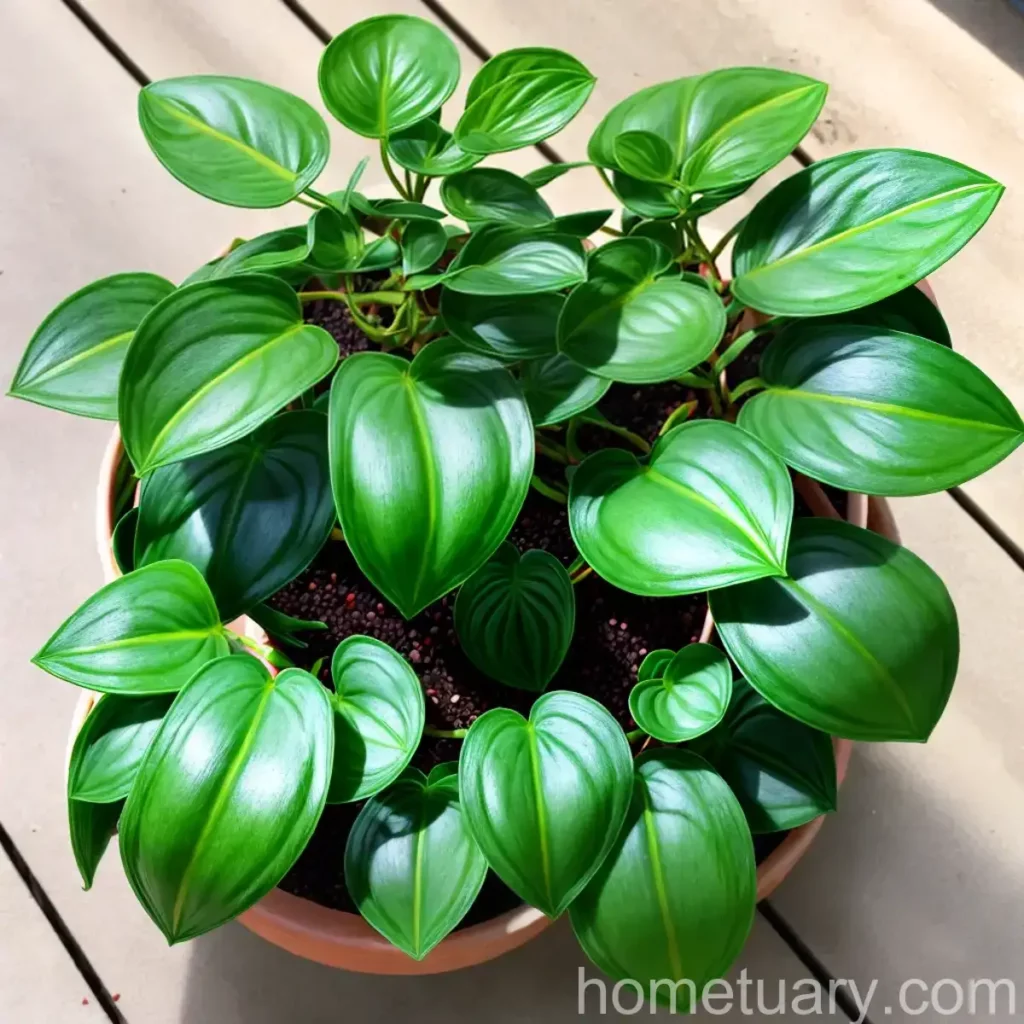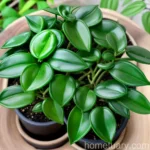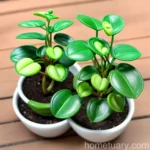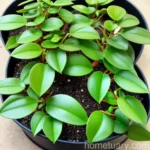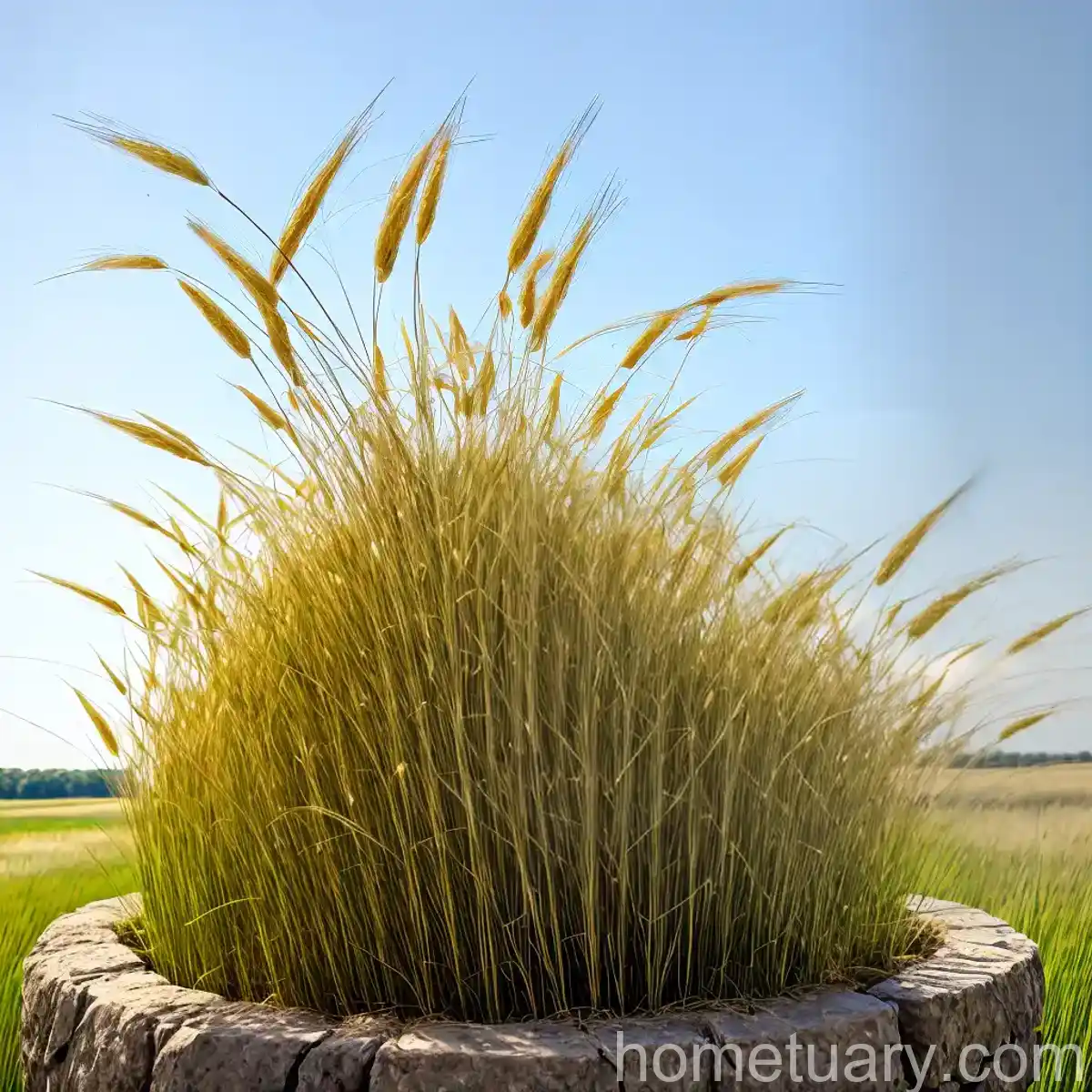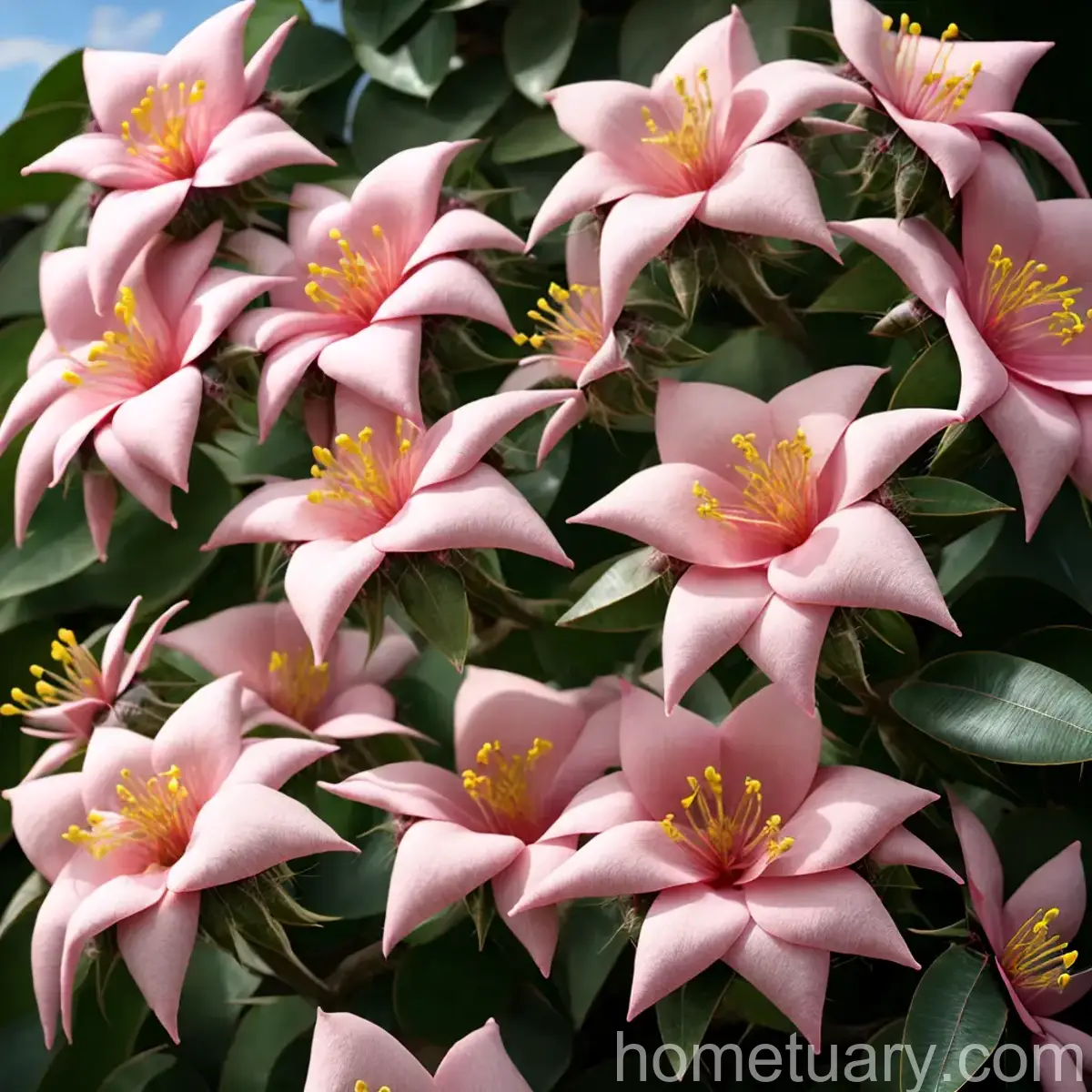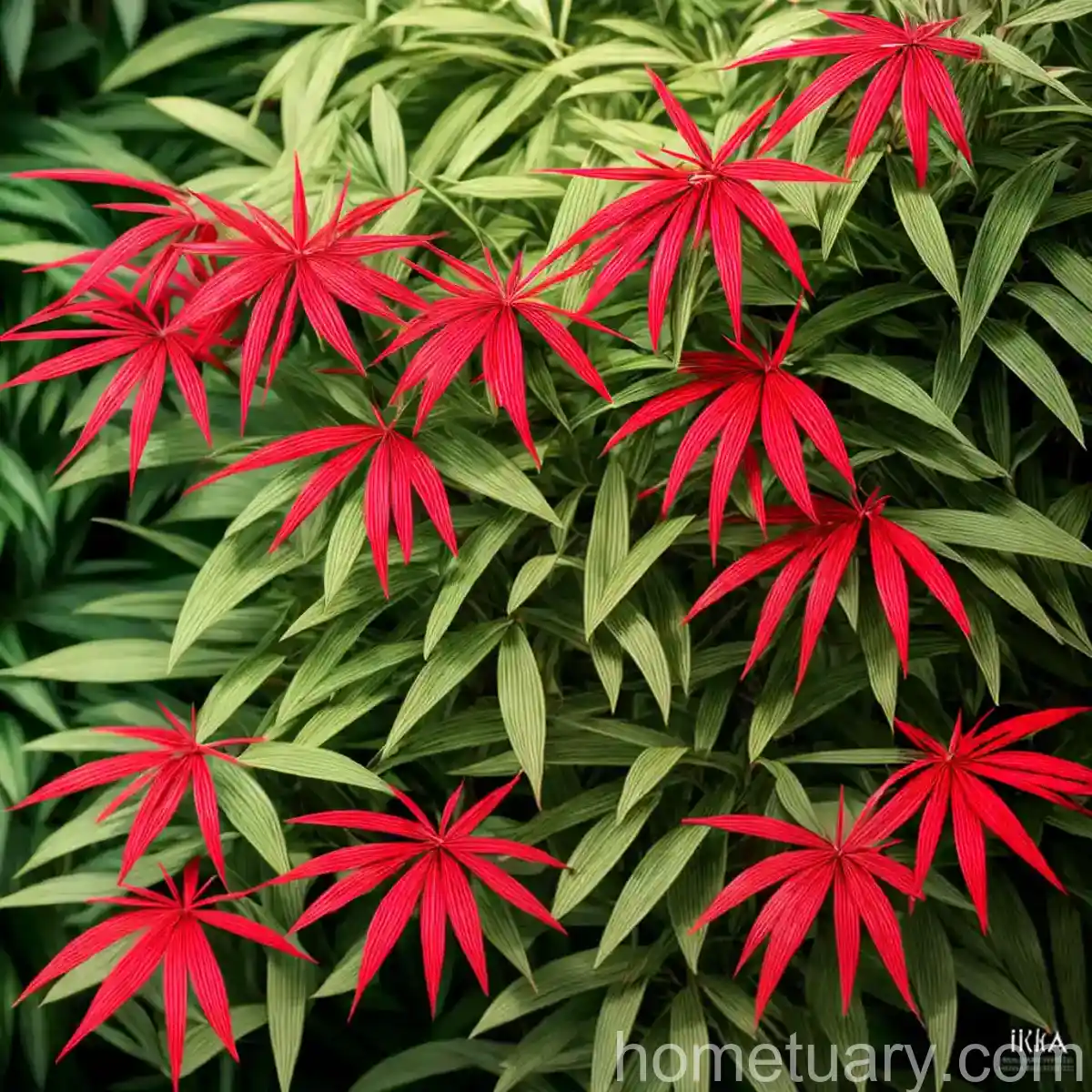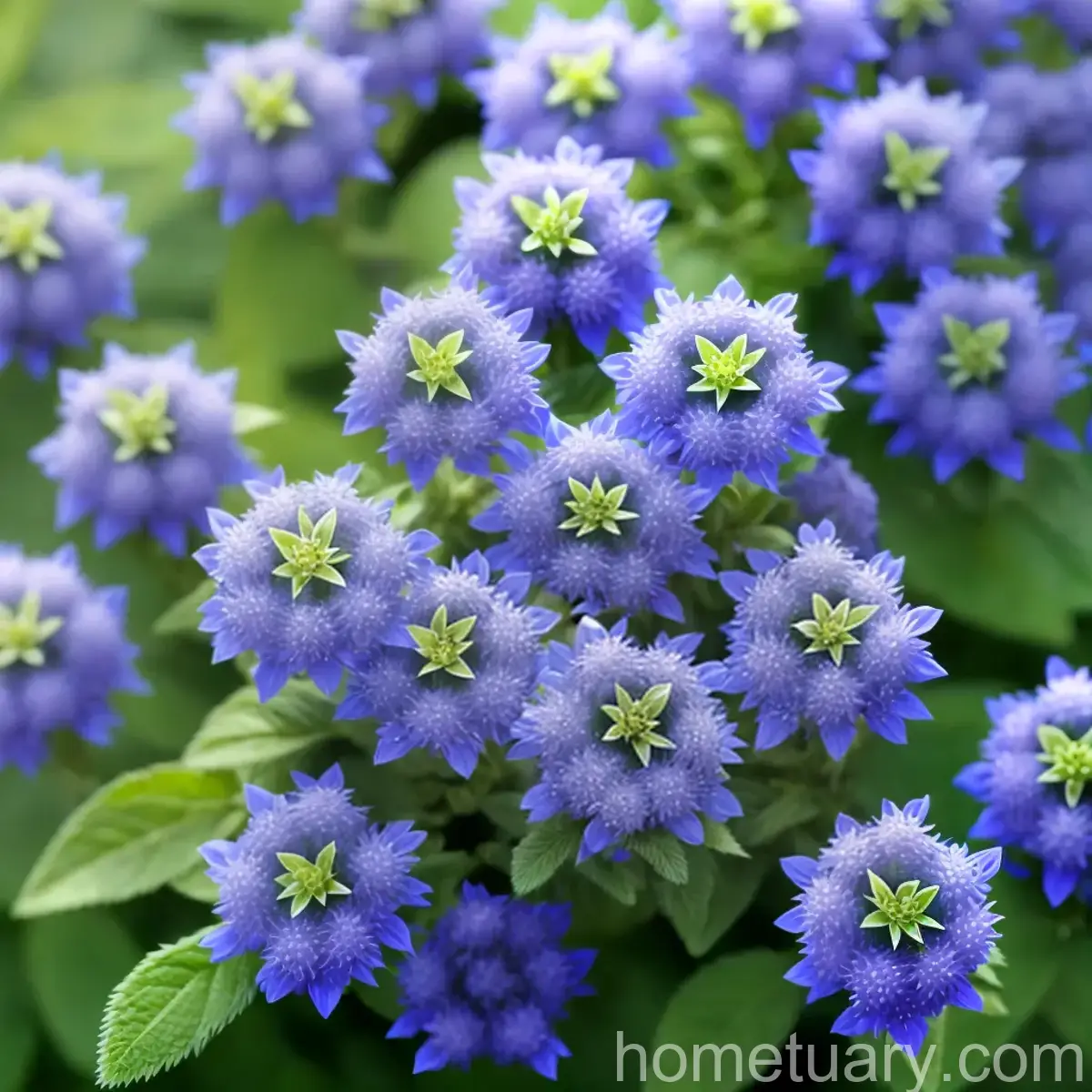All About Watermelon Peperomia (Peperomia argyreia)
Watermelon peperomia, scientifically known as Peperomia argyreia, is a charming and low-maintenance plant that has been gaining popularity among plant enthusiasts. Native to South America, particularly Brazil, this stunning plant has unique watermelon-like patterned foliage, which makes it a desirable choice for plant lovers. In this comprehensive guide, we will delve into the intriguing world of watermelon peperomia, exploring its culture, uses, care requirements, common diseases, pests, and much more.
What is Plant Watermelon Peperomia (Peperomia argyreia)?
Plant Description
Watermelon peperomia is a species of the Peperomia genus characterized by its striking foliage. The leaves of the watermelon peperomia are fleshy, glossy, and feature a distinctive silver and green striped pattern, reminiscent of the rind of a watermelon. This unique appearance has earned it the common name “watermelon peperomia.”
Growing Habit
As a compact, bushy plant, watermelon peperomia typically reaches a height of 8 to 10 inches and has a spread of 8 to 12 inches. Its diminutive size makes it an ideal choice for small spaces and indoor environments.
Ornamental Value
The aesthetic appeal of the watermelon peperomia lies in its eye-catching foliage, making it a sought-after addition to indoor plant collections, terrariums, and decorative plant arrangements.
Toxicity
Good news for pet owners and households with small children – watermelon peperomia is non-toxic to cats and dogs. It is considered safe to have around pets and children, making it a versatile and family-friendly plant.
Key Takeaways – Watermelon Peperomia (Peperomia argyreia)
Before delving into the specific aspects of caring for a watermelon peperomia, let’s outline the key takeaways regarding this captivating plant:
- Scientific Name: Peperomia argyreia
- Common Name: Watermelon peperomia
- Origins: South America, particularly Brazil
- Distinctive Feature: Striped, watermelon-like pattern on its leaves
- Growth Habit: Compact, bushy, and ideal for small spaces
- Toxicity: Non-toxic to cats and dogs
- Ornamental Use: Suitable for indoor settings, terrariums, and decorative arrangements
Now that we have acquainted ourselves with the basic characteristics of watermelon peperomia, let’s dive into the details of its culture, uses, care requirements, and more.
Culture
Cultivating watermelon peperomia involves understanding its specific environmental and care needs to ensure healthy growth and vibrant foliage. From light and water requirements to soil preferences, each aspect contributes to the overall well-being of the plant.
Water
Watermelon Peperomia Watering Schedule
One of the critical aspects of watermelon peperomia care is maintaining a proper watering schedule. As a succulent plant, watermelon peperomia is susceptible to root rot if overwatered. It is essential to allow the soil to dry out partially between watering sessions to prevent waterlogged conditions and promote healthy root development.
Watermelon Peperomia Water Requirements
Ensure that the plant’s root zone receives adequate moisture without becoming excessively wet. A well-draining potting mix and a watering frequency of approximately once every 7-10 days during the growing season, and less often in winter, can contribute to the plant’s overall health.
Sunlight
Watermelon Peperomia Light Preferences
Watermelon peperomia thrives in bright, indirect light. Position the plant in a location that receives ample but filtered sunlight to prevent leaf scorch and maintain the vivid coloration of its foliage. Avoid placing it in direct sunlight, especially during the intense midday hours, as this can lead to leaf burn.
Soil
Best Soil for Watermelon Peperomia
To mimic its natural habitat, watermelon peperomia benefits from a well-aerated, well-draining potting mix. A mixture of peat moss, perlite, and coarse sand can provide the ideal growing medium for the plant. It is also essential to choose a pot with drainage holes to prevent water from accumulating at the roots.
Fertilizer
Watermelon Peperomia Feeding Needs
During the growing season, which typically spans from spring to early fall, watermelon peperomia can benefit from light feeding with a balanced, liquid houseplant fertilizer. Regular fertilization every 4-6 weeks can help support healthy growth and vibrant foliage.
Pruning
Watermelon Peperomia Pruning Techniques
Pruning watermelon peperomia is primarily focused on maintaining its bushy and compact form. Regular removal of yellowing or damaged leaves and occasional pinching of the growing tips can encourage a fuller, more attractive appearance. Pruning also helps to manage the plant’s size and shape as it continues to grow.
Propagation
Watermelon Peperomia Propagation
Watermelon peperomia can be propagated through several methods, including leaf cuttings, stem cuttings, or division. Leaf cuttings, in particular, are a popular way to propagate watermelon peperomia and can yield new plants with the same striking foliage as the parent plant.
Container Popularity
Watermelon Peperomia as a Decorative Plant
The ornamental value of watermelon peperomia makes it a popular choice for decorative plant arrangements, terrariums, and as an eye-catching addition to indoor spaces. Its compact size and unique foliage pattern make it an excellent candidate for creative plant displays and stylish container gardening.
Uses
Watermelon Peperomia as an Indoor Plant
Watermelon Peperomia Indoor Care
The compact size and low-light tolerance of watermelon peperomia make it an ideal indoor plant. Its decorative foliage adds a touch of natural beauty to interior spaces, and its relatively low maintenance requirements make it appealing for indoor plant enthusiasts.
Air-Purifying Properties
Watermelon Peperomia Benefits for Indoor Air Quality
Like many houseplants, watermelon peperomia contributes to indoor air purification by removing harmful volatile organic compounds (VOCs) and enhancing air quality. Its presence can benefit occupants by promoting a healthier indoor environment.
Decorative Plant Ideas
Watermelon Peperomia for Stylish Arrangements
The vibrant, watermelon-like foliage of this plant provides endless opportunities for creative and stylish plant arrangements. Whether used as a standalone statement piece or as part of a curated plant display, watermelon peperomia adds a visually appealing touch to any space.
Gift Plant
Watermelon Peperomia as a Gift
Due to its unique foliage and low-maintenance nature, watermelon peperomia makes for an excellent gift for plant lovers, beginners, or anyone looking to add a touch of greenery to their living or working space. Its visual appeal and easy care requirements make it a thoughtful and enduring gift option.
Common Diseases
Disease Diagnosis
Watermelon Peperomia Common Problems
Watermelon peperomia is relatively resistant to diseases, but it may occasionally encounter issues such as leaf spot diseases or fungal infections, particularly in conditions of excess moisture or poor air circulation. Prompt diagnosis and treatment can help mitigate potential damage to the plant.
Yellowing Leaves
Watermelon Peperomia Leaves Turning Yellow
Yellowing leaves in watermelon peperomia can be indicative of overwatering, underwatering, or nutrient deficiencies. Understanding the specific cause of leaf discoloration is crucial in implementing appropriate corrective measures to restore the plant’s health and vibrancy.
Common Pests
Pest Management
Watermelon Peperomia Pest Control
While watermelon peperomia is generally resilient against pests, it may attract common houseplant pests such as spider mites, mealybugs, or scale insects. Regular inspection and proactive pest management can prevent infestations and protect the plant from potential damage.
Botanist’s Tips
Tips for Growing Watermelon Peperomia
- Optimal Light: Provide bright, indirect light to maintain the vivid coloration of the foliage.
- Proper Watering: Allow the soil to partially dry out between waterings to prevent overwatering.
- Well-Draining Soil: Use a well-aerated, well-draining potting mix to promote healthy root development.
- Regular Pruning: Remove yellowing or damaged leaves to maintain the plant’s aesthetic appeal.
- Propagation Techniques: Explore leaf cuttings or stem cuttings as effective propagation methods.
Fun Facts
Here are some fascinating tidbits about watermelon peperomia:
- Native Beauty: Watermelon peperomia hails from the tropical climate of South America, where it thrives amidst lush greenery.
- Variegated Foliage: The silver and green striped pattern on its leaves closely resembles the rind of a watermelon, inspiring its delightful common name.
- Low-Maintenance Charm: Its easy-going nature and attractive appearance make it a popular choice for both seasoned plant enthusiasts and beginners alike.
Explore the world of watermelon peperomia and discover the joy of nurturing this captivating plant with its mesmerizing foliage and charming presence.
Links to External Resources
For further in-depth information on watermelon peperomia care and cultivation, consider exploring the following resources:
- Watermelon Peperomia Care Guide – The Spruce
- Peperomia argyreia Care Tips – Houseplant Resource Center
- Growing Watermelon Peperomia Indoors – The Plant Guide
As we conclude this comprehensive guide to watermelon peperomia (Peperomia argyreia), we hope that it has provided valuable insights into the various aspects of caring for and appreciating this captivating plant. From its unique foliage to its low-maintenance nature, watermelon peperomia continues to charm plant enthusiasts and add a touch of natural beauty to indoor spaces. Embrace the joy of cultivating and enjoying the delightful presence of watermelon peperomia in your home or workspace.

